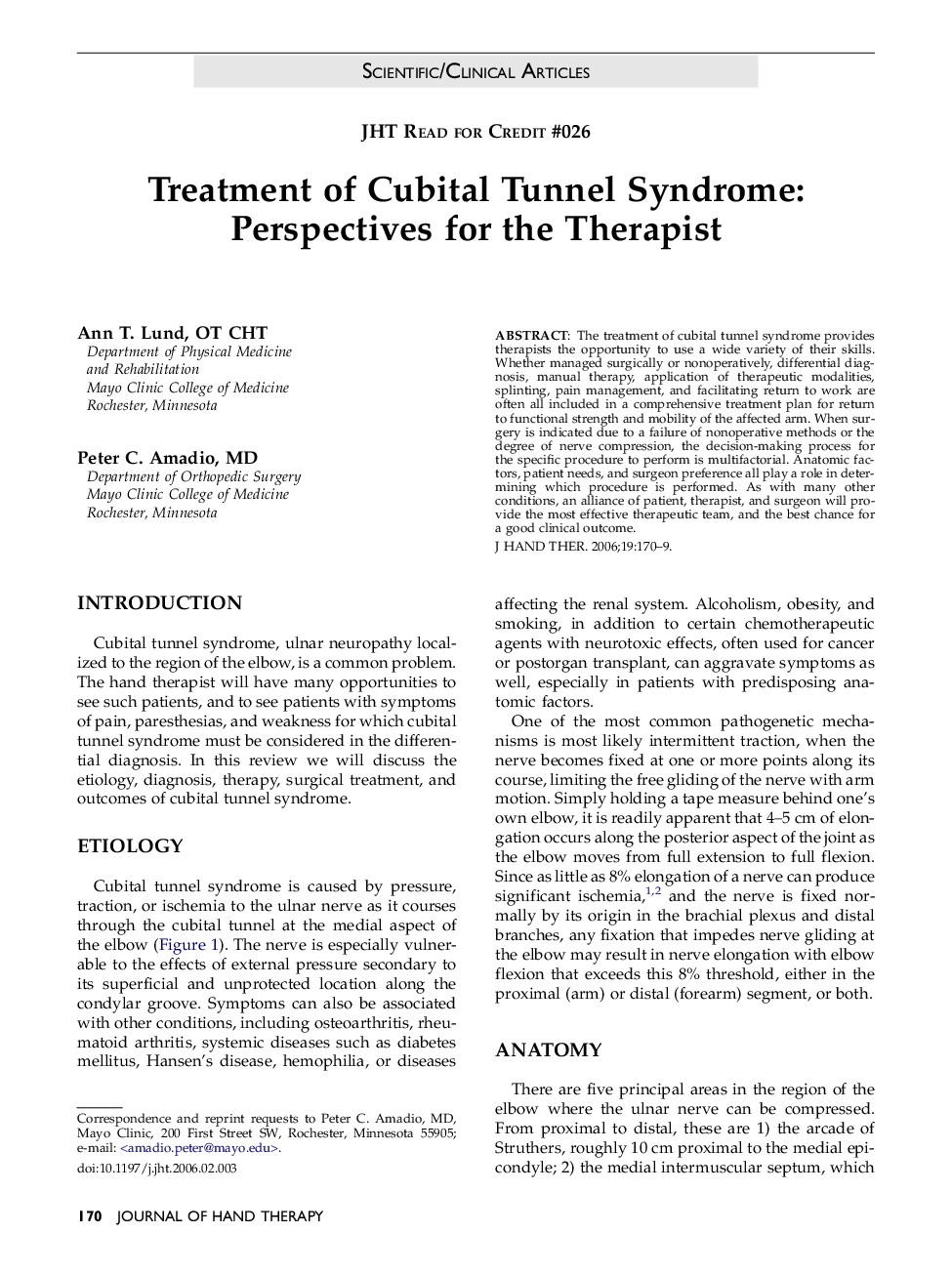| Article ID | Journal | Published Year | Pages | File Type |
|---|---|---|---|---|
| 2695352 | Journal of Hand Therapy | 2006 | 10 Pages |
The treatment of cubital tunnel syndrome provides therapists the opportunity to use a wide variety of their skills. Whether managed surgically or nonoperatively, differential diagnosis, manual therapy, application of therapeutic modalities, splinting, pain management, and facilitating return to work are often all included in a comprehensive treatment plan for return to functional strength and mobility of the affected arm. When surgery is indicated due to a failure of nonoperative methods or the degree of nerve compression, the decision-making process for the specific procedure to perform is multifactorial. Anatomic factors, patient needs, and surgeon preference all play a role in determining which procedure is performed. As with many other conditions, an alliance of patient, therapist, and surgeon will provide the most effective therapeutic team, and the best chance for a good clinical outcome.
